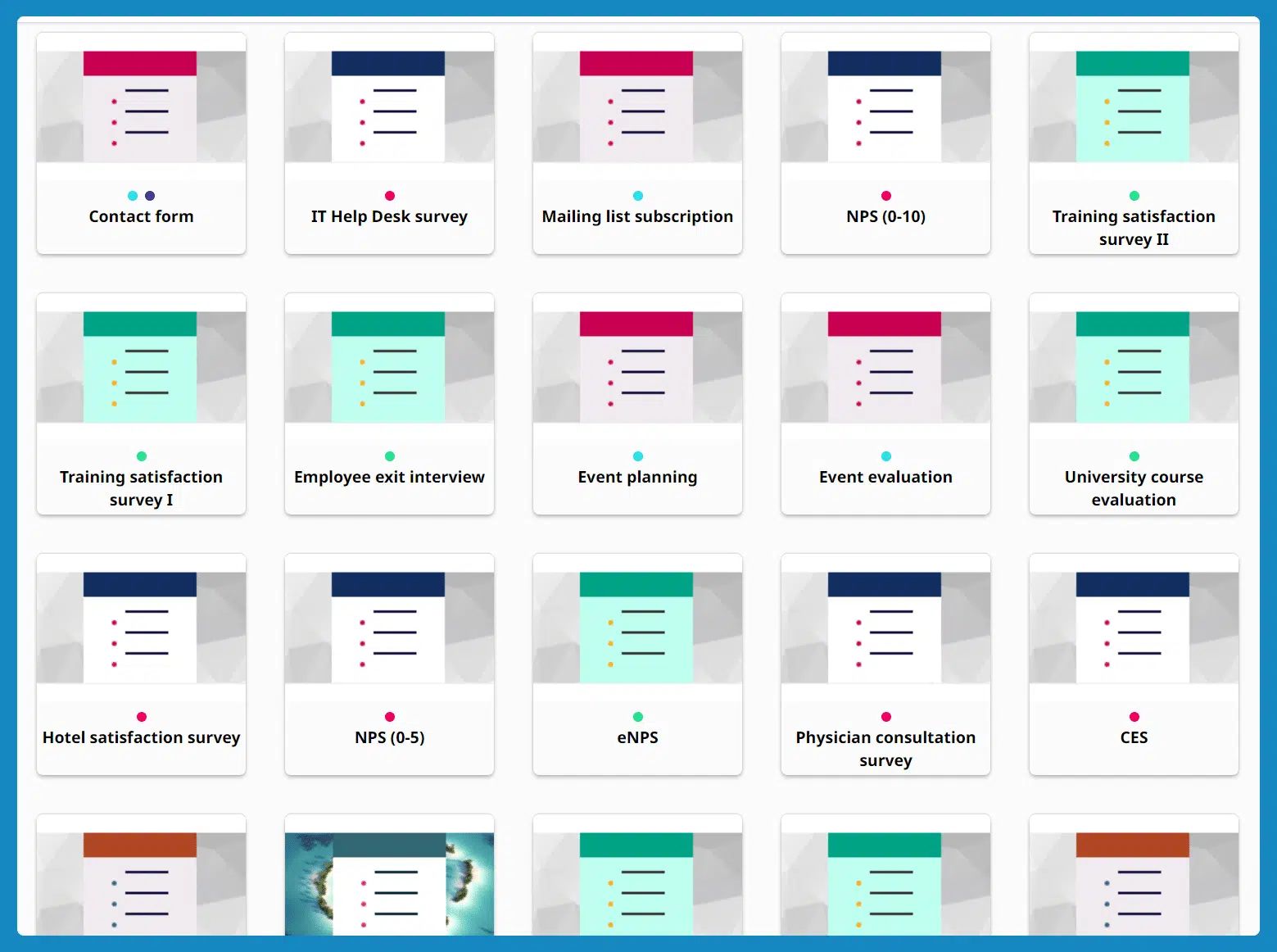There is nothing wrong with not knowing how you feel about something. But some people agree with someone’s opinion and take it over as their own, regardless of what they think.
There’s a name for this phenomenon – acquiescence bias. And it very often occurs in feedback sessions, group discussions, and… surveys!
And unfortunately, it can make your survey less reliable overall.
Learn how to avoid it.
What is acquiescence bias?
Acquiescence bias is a tendency where people often agree with statements or questions, no matter what their own beliefs are. It may happen in environments like surveys or group discussions, where agreeing seems easier than sharing a differing viewpoint.

Is agreement bias the same as acquiescence bias?
Yes, it’s the same phenomenon but has an alternative name.
What causes acquiescence bias in surveys?
There might be many reasons why people don’t tell what they really think. And here are the most common ones:
01 Desire to please in survey responses
It might be a tactic to avoid disappointing someone by expressing somebody’s real opinion. So people tend to answer positively even if their experiences are negative. They do that to please others, for instance, the surveyor.
02 Avoiding conflict during surveys
Respondents sometimes have the tendency to agree with everything just to minimize any arguments or hard feelings. They might think giving the answer they believe the researcher wants to hear keeps the situation calm.
In street surveys, when you talk to people, it’s better to ask respondents when they’re alone. Their friends or family they’re with might be the reason they give you incorrect data.
03 Lack of understanding of survey questions
The participants, not wanting to seem confused or unsure, might give a random answer instead of asking for clarification of the context.
For some people, it’s easier to say yes than to admit they don’t get what’s being asked.

04 Fatigue or boredom in long surveys
When survey respondents go through surveys, they can get tired or bored. And this feeling may affect their ability to give accurate responses.
Instead of carefully thinking about each question, they might start to quickly agree or disagree without much thought.
Why is that? Because the surveys tend to be long, and respondents lose focus and interest.
05 Social desirability in answering surveys
Acquiescence response bias happens when people choose to agree with a statement because they think it makes them look good or acceptable in the eyes of others.
They might not answer honestly if they feel their true opinion might be judged.
It’s a bit different from the desire to please in surveys. Here, respondents are influenced by what they believe is socially acceptable or admirable in general society. Respondents are motivated by fitting into societal norms, avoiding judgment, or being viewed positively by a wider audience than the surveyor.
📰 See the top 10 tricks to help you build better surveys.
Do you want to encourage honest answers? We’ve got something for you.
How to avoid acquiescence bias when designing a survey?
Are you afraid that researcher bias is something that may concern you? We’ve come up with a handful of tips on how to prevent it.
#1 Use balanced questions in the survey
Your questionnaire questions should be structured in a way that doesn’t lead or influence the participant toward a particular answer.
For example, rather than asking questions that might implicitly suggest a ‘yes’ or ‘no’ answer, the questionnaire should include options that cover a range of opinions, like ‘I don’t know,’ ‘maybe,’ ‘a little,’ etc.
#2 Use open-ended questions to express people’s thoughts
Ask questions that let people write down or speak their thoughts in their own words. You’ll get to know true opinions, get to know their which makes your market research more reliable, leading to reduced acquiescent response bias.
🟢 An open-ended question example:
What are the key digital marketing strategies or tactics you found most effective for your business or organization? Please provide specific examples if possible, for example do you know what is the digital marketing strategy that tracks users across the web?
🔴 A closed-ended question example:
Have you ever allocated a portion of your marketing budget specifically for digital marketing efforts?
The closed-ended questions are useful and have a place in surveying – they provide data that are easy to quantify and analyze and quick to answer. But to avoid acquiescence bias, it’s better to mix question types.
#3 Test the survey for issues
Ask a few people to complete the survey as a test. Your trial participants contribute to making the survey work without any issues. They take the survey just like the real respondents would and provide you feedback on what works and doesn’t.
They may report technical problems (if you conduct your survey online), and they can also let you know if the questions were confusing or if they felt like just agreeing to everything. Then, you know your survey may lead to acquiescence bias and need some tweaks.
📚 Read also: 6 Great Customer Feedback Examples.
#4 Assure survey respondents that they’re anonymous
It’s best to mention it at the beginning of the survey. Assured respondents who know their answers are private feel more free to be honest.
Then, researchers have more quality data because people are less likely to just give positive answers to please someone.
#5 Explain each question clearly
If you’re not sure about that, ask someone to take the survey to check if it’s clear enough. The more testers, the better.
But, from the very beginning, use simple language and grammar. Avoid long sentences and jargon. After asking, you can add a few sentences of explanation, but keep it as simple as possible.
Straightforward questions make it easier for people to express their thoughts and feelings instead of choosing response options that don’t reflect their views.
Here’s an example.
🔴 Complicated version:
Do you find the multifarious and intricate intricacies of contemporary digital marketing methodologies to be conducive to the optimization of your brand’s online presence and engagement levels?
🟢 Revised, clear question with an explanation:
Do you think the complex and modern digital marketing methods* are helping your brand’s online presence and engagement?
*Modern digital marketing methods are, for instance, using AI-powered chatbots or influencer marketing.
The complicated version uses complex and hard-to-understand grammar structures and terminology. The revised version simplifies the question using straightforward language. There’s also an explanation of the term that could be unclear.
#6 Use a mix of questions
The same type of questions over and over again make people bored. And when they’re bored, they are more likely to agree with whatever you ask about.
Mix the questions up to get a better sense of people’s behavior and opinions. Use multiple-choice questions, open-ended questions where they can explain in their own words. You can also add some visuals and audio elements.
SurveyLab offers many surveys and question types:

#7 Avoid long surveys
Keep it short and sweet. It’s another way to reduce acquiescence bias.
Besides, when a survey is long and contains only one type of question, it’s a recipe for getting your respondents bored and tired. Review the questions you already have and rethink if all of them should be included.
#8 Be mindful of social norms
Sometimes, we tend to have an “ideal self” in our minds, and we want to show that we exist close to that ideal. Some people say things that we think others expect or want to hear rather than what we believe, and this is how acquiescence bias happens.
As a survey creator, try to formulate questions that encourage honest and authentic answers rather than ones that may push respondents to conform to social norms and socially desirable responses.
🟢 A question encouraging the honest answer:
How often do you exercise each week, even if it’s just a little? Please be as accurate as possible, and remember that your answers are anonymous.
🔴 A question that may people align with social norms:
Do you believe a healthy diet and regular exercise routine is necessary to keep a balanced lifestyle?
The second one frames healthy eating and exercise as part of a balanced lifestyle, a commonly accepted societal norm. Social expectations may make respondents more likely to agree with this statement.
Building a survey is ahead of you? We’ve got a tool you can find useful – meet SurveyLab.
How can SurveyLab help with avoiding acquiescence bias?
SurveyLab is a platform for building online surveys, questionnaires, forms, and even tests. The software has many useful capabilities. 👇🏻

Using SurveyLab, researchers can:
✔️ Design their surveys as they like
There are over 25 types of questions. On top of that, you can use graphics, audio, and video in your survey to make it engaging.
✔️ Collect the responses via different channels
Like email, SMS, or social media. Also, the surveys are safe – nobody but a researcher can check them. And it’s GDPR-compliant. Respondents can feel comfortable sharing their honest opinions.
SurveyLab shows results in real time and lets you look at them in different ways. For example, using graphical real-time reports or question and time filters.
✔️ Work with others
If you’re not the only one doing the survey research, use SurveyLab’s collaboration features: share the results, add accounts for your clients or coworkers, and copy your survey to another account.
Also, there are many integrations, such as Zapier, Zendesk, and Slack.
Do you need anything else? Contact SurveyLab, they can develop a tailored solution for you.
Conclusion on acquiescence response bias
When acquiescence bias occurs, the survey results can be misleading. That is why you need to do your best to avoid it. Provide anonymity, clear questions, use simple language and use different types of questions. How to do it? With SurveyLab!
Use SurveyLab to create a diverse and easy-to-follow survey. Try it for free and create your first survey!
FAQ on acquiescence bias
Let’s clear the doubts out.
Acquiescence bias is when people often say yes or agree with something in surveys or group talks, even if they don’t truly believe what they are saying. They might do this to avoid conflict or because they think it’s easier than expressing their own different thoughts.
When people show acquiescence bias in surveys, the results might not show what people really think or feel. This can make the survey less helpful because it doesn’t give a true picture of people’s opinions or experiences.
To reduce acquiescence bias, you can use balanced questions and include options like ‘I don’t know’ or ‘maybe’. Also, you can ask open-ended questions where people write their thoughts in their own words.
Keeping surveys short helps prevent people from getting bored or tired. When surveys are too long, people might start agreeing without thinking much just to finish. Short surveys help keep attention and lead to more accurate answers.
SurveyLab lets you design surveys with different types of questions and media like graphics and videos. It also makes sure only the researcher can see the responses, which helps people feel safe to share their honest thoughts.

Leave a Message
You must be logged in to post a comment.